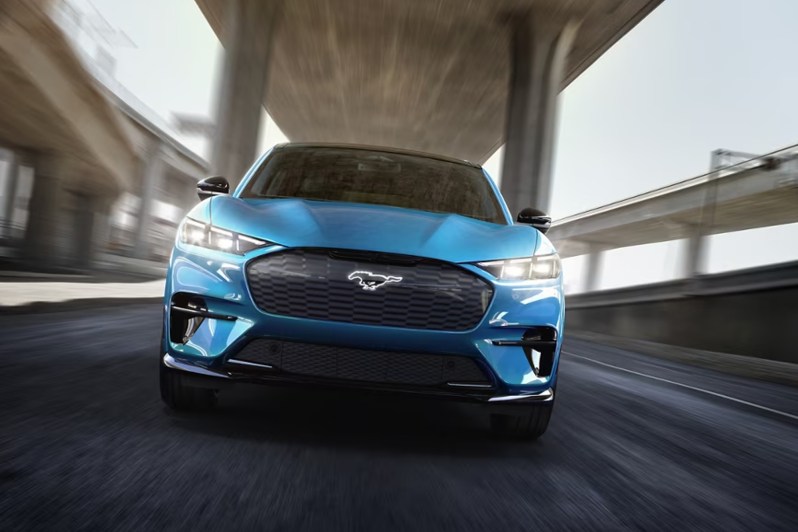
Spring is in the air, and Ford engineers share their love for the 2024 Mustang Mach-E GT Performance Upgrade. It’s not like the Mach-E GT without the upgrade is a sluggard, not with 480 horsepower and 600 lb-ft of torque on tap. The standard 2024 Mach-E GT is good for 3.8-second trips from zero to 60 mph and scoots a quarter-mile in a hasty 12.8 seconds. Those are impressively short times, but Ford went further with the Mach-E GT Performance Upgrade.
Why Ford’s Mustang Mach-E GT performance upgrade matters
Frankly, the Mach-E doesn’t look like a scorching hot ride. The FDA categorizes the electric Mustang as an SUV, although to my eyes, it looks like a hatchback. However, neither vehicle profile pleased Mustang loyalists who insisted Mustangs should look like muscle cars and get their power from internal combustion engines (ICEs).
Ford engineers responded with the new e-motor for the 2024 Mach-E GT which knocks down the impressive numbers above. But then Ford also opened its order books for the GT performance upgrade.
What difference does the Mach-E GT Performance Upgrade make?
Torque. According to Ford, adding the performance upgrade to the new Mach-E GT doesn’t boost the horsepower. But suddenly, the GT has an additional 100 lb-ft of torque for a total of 700 lb-ft. That extra big helping of twist force knocks the performance specs down to 3.3 seconds for a zero-to-60 mph run and 11.8 seconds for a quarter mile. Those serious numbers are faster than the Tesla Model Y Performance and the Porsche Macan 4 Electric.
How does the Mach-E GT Performance Upgrade work?
The Performance Upgrade extracts the additional torque from the Mach-E GT’s motor via software, specifically powertrain thermal modeling and control algorithms that work with the new electric motor.
There are three ways to get the Mach-E GT Performance Upgrade. It’s available when a buyer orders a 2024 Mach-E GT. Also, the 2024 Mach-E Rally off-road capable GT version, like the spiffy yellow one in the image just above, includes the Performance Upgrade as part of the package.
The third way to get the upgrade gives buyers a chance to try the 2024 Mach-E GT first without it. Because the upgrade is software-based and the Mach-E supports over-the-air (OTA) software updates, a buyer can purchase the Performance Upgrade later.
What else did Ford do for the 2024 Mach-E GT?
In addition to crafting the Performance Upgrade for the 2024 Mach-E GT, Ford also bumped up the new GT’s equipment list with three features from last year’s GT Performance Edition. For 2024, the Mach-E GT standard gear includes Brembo branded front brake calipers, the MagneRide Damping System, and Ford Performance front seats.
Ford also improved charging time with DC fast chargers by about 20% for all 2024 Mustang Mach-E models and increased ranges a bit. Charging times and range matter, but the quarter-mile times and zero to 60 mph acceleration tests are more likely to quiet the concerns of the e-motor doubters.






